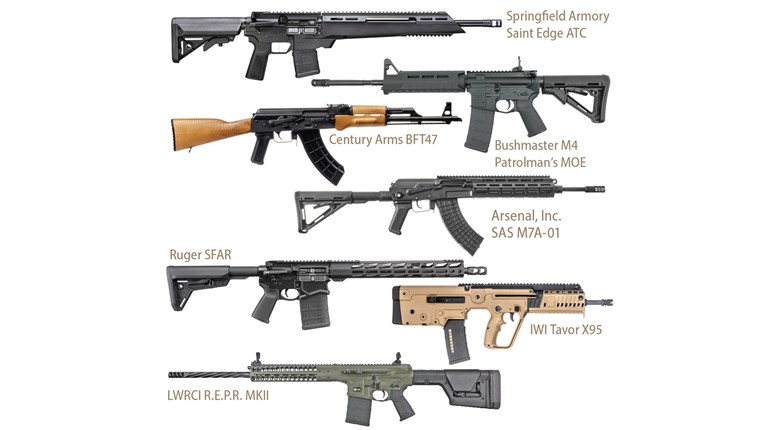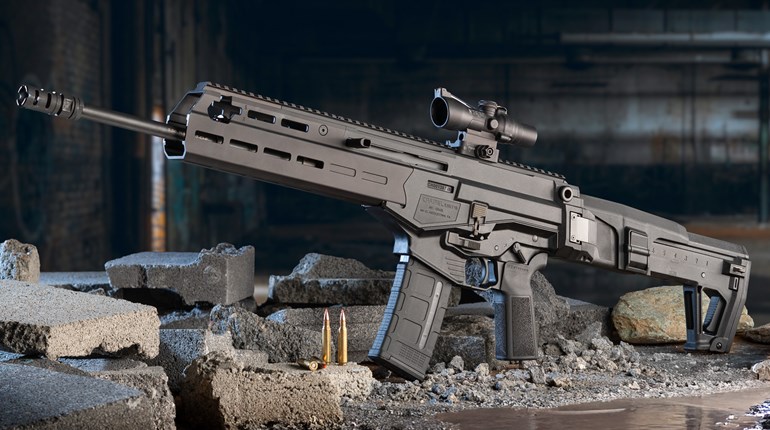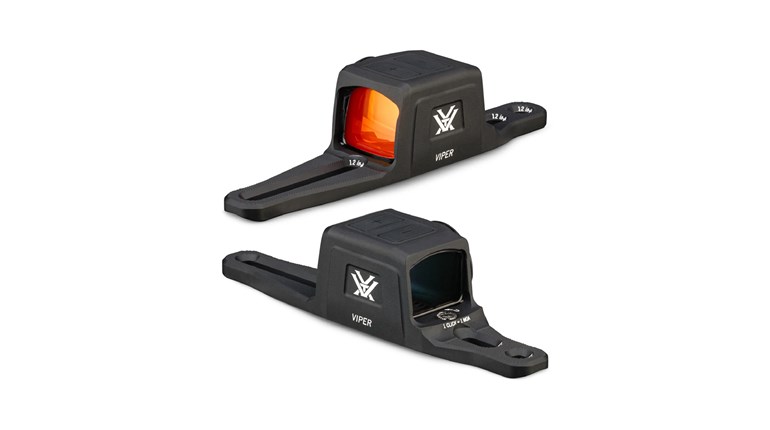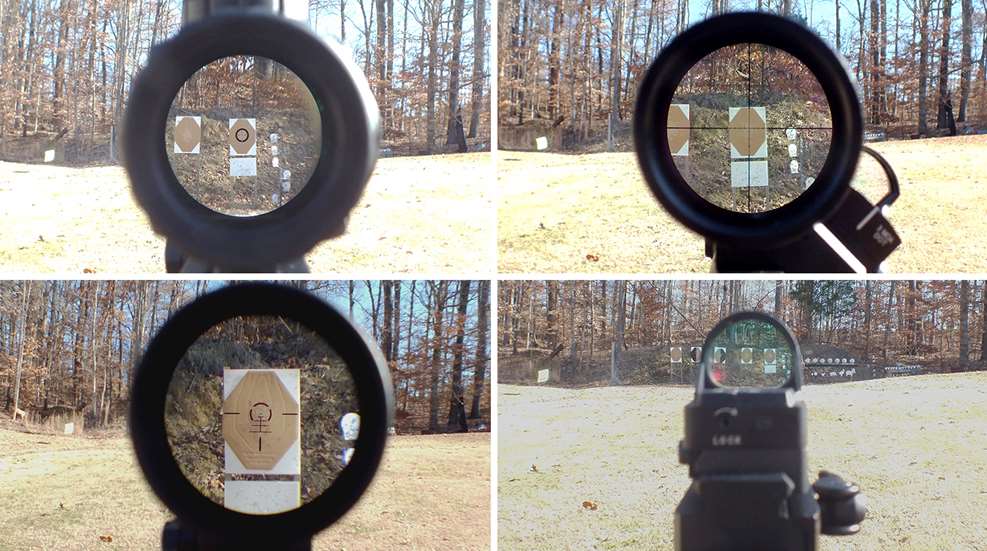
We were shooting a tactical carbine match at a local club and the sixth stage featured the longest shots of the match. The other stages were primarily carbine match stages with most of the targets focused on speed. The shortest shot in the sixth stage was 50 yards and most of those targets were relatively small. It was a simple stage with all shots taken from a single shooter box, but many of the shooters were having trouble hitting the tougher targets.
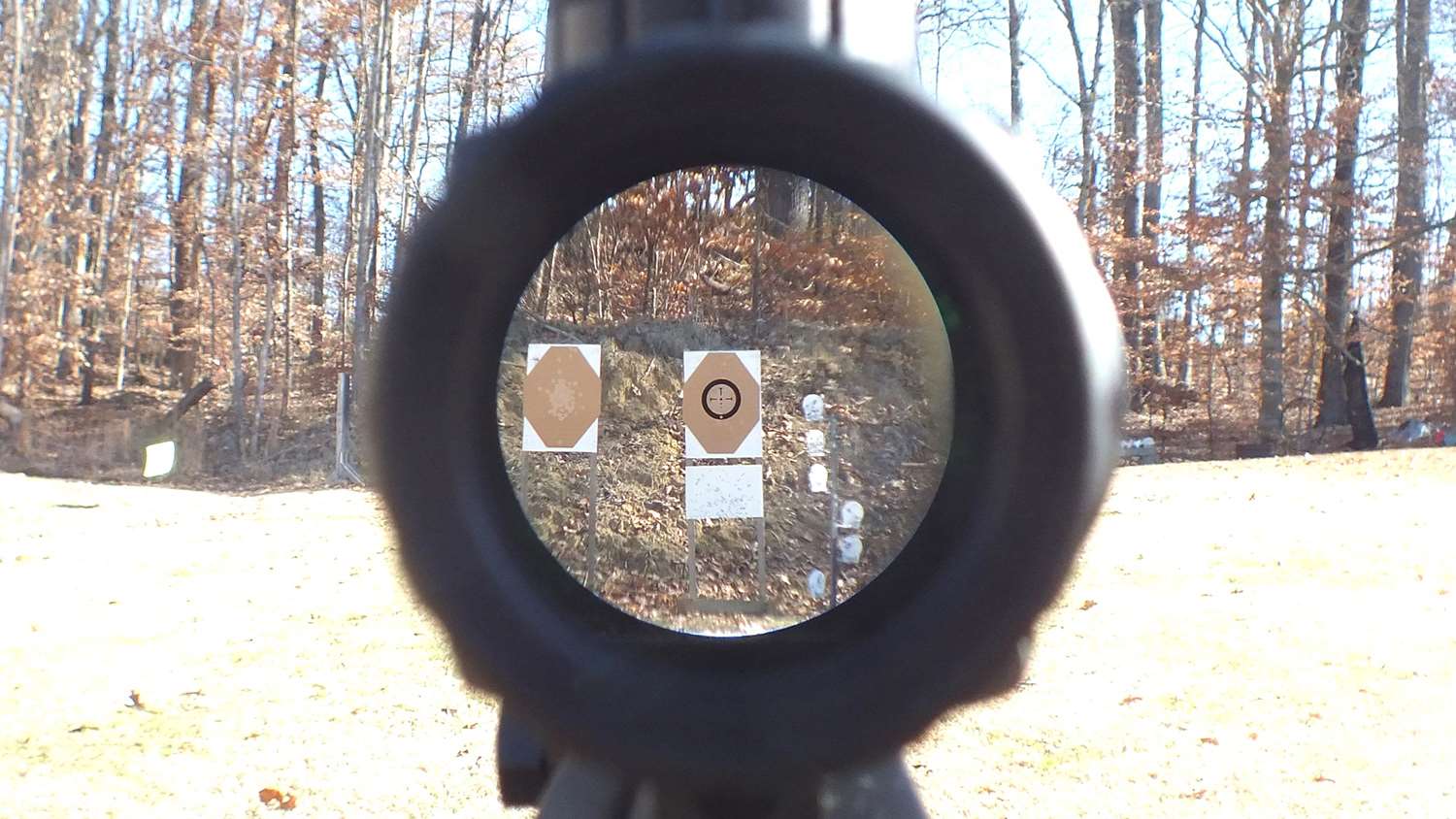
I shot the close targets first and cranked my 1-4x scope up to three for the longer shots. I noticed the shooters having the most trouble were using reflex or dot sights, currently popular for Pistol Caliber Carbines (PCC). When I did my initial sight picture at the before loading my carbine, I noticed how difficult it was to center the smaller targets and made the tactical decision to crank up my magnification for the long shots, the reflex sight guys didn’t have that option and their dots were making it hard to center the smaller plates. I ran them one for one and my grandson did the same.
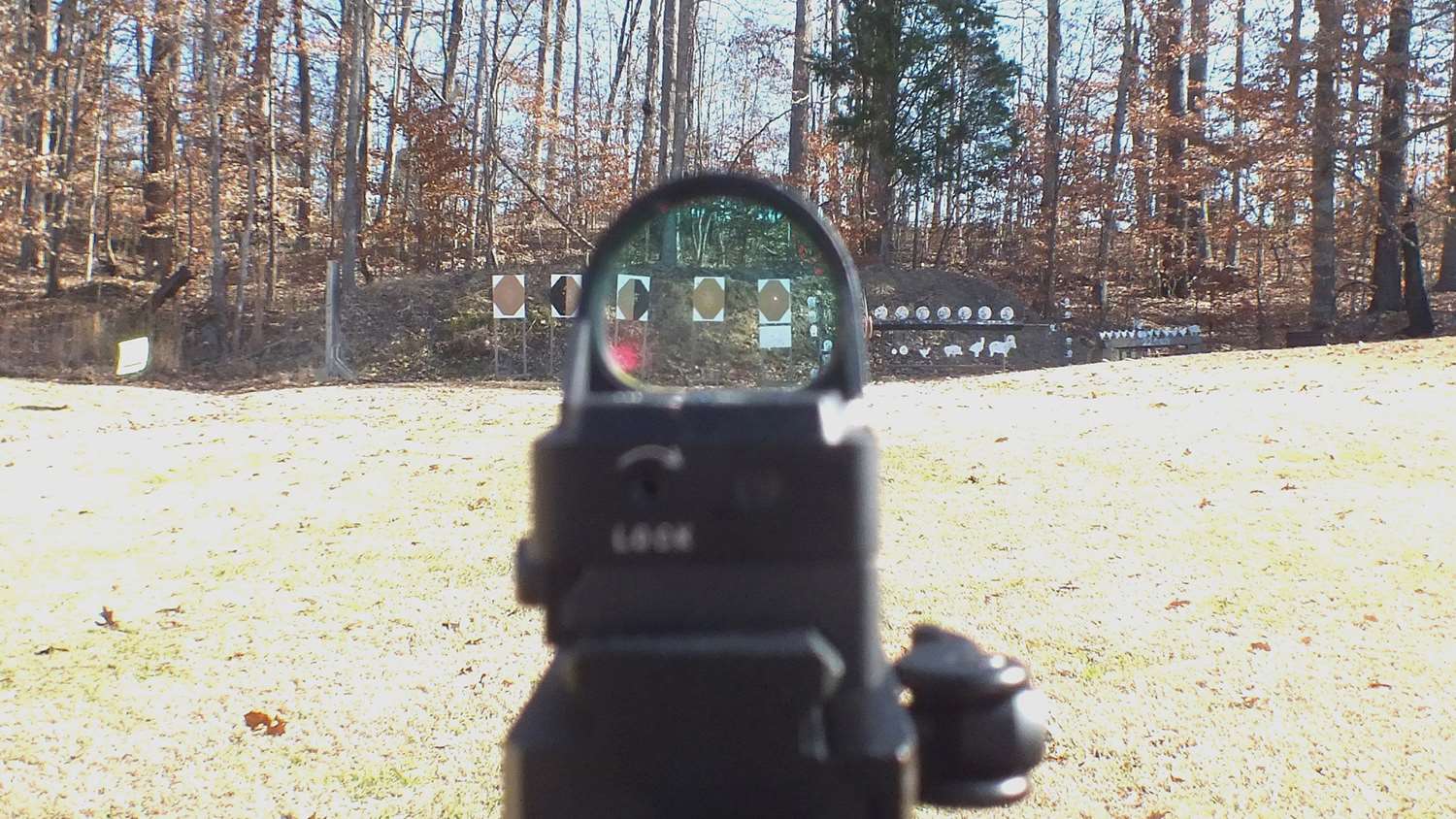
As long as there are shooters, there will be discussions, and sometimes heated arguments, over what equipment works best for any certain application, but it’s been my experience that the 1x variable scope is the most versatile and adaptable optic for a modern sporting rifle (MSR). While reflex and dot scopes are great for close range fast shooting, recent advancements in optics have allowed traditional optical scopes to offer the best of both worlds. At 1x, the current crop of low magnification variables allow fast target acquisition and the option of cranking up the magnification to allow precise shooting within the capabilities of most carbines.
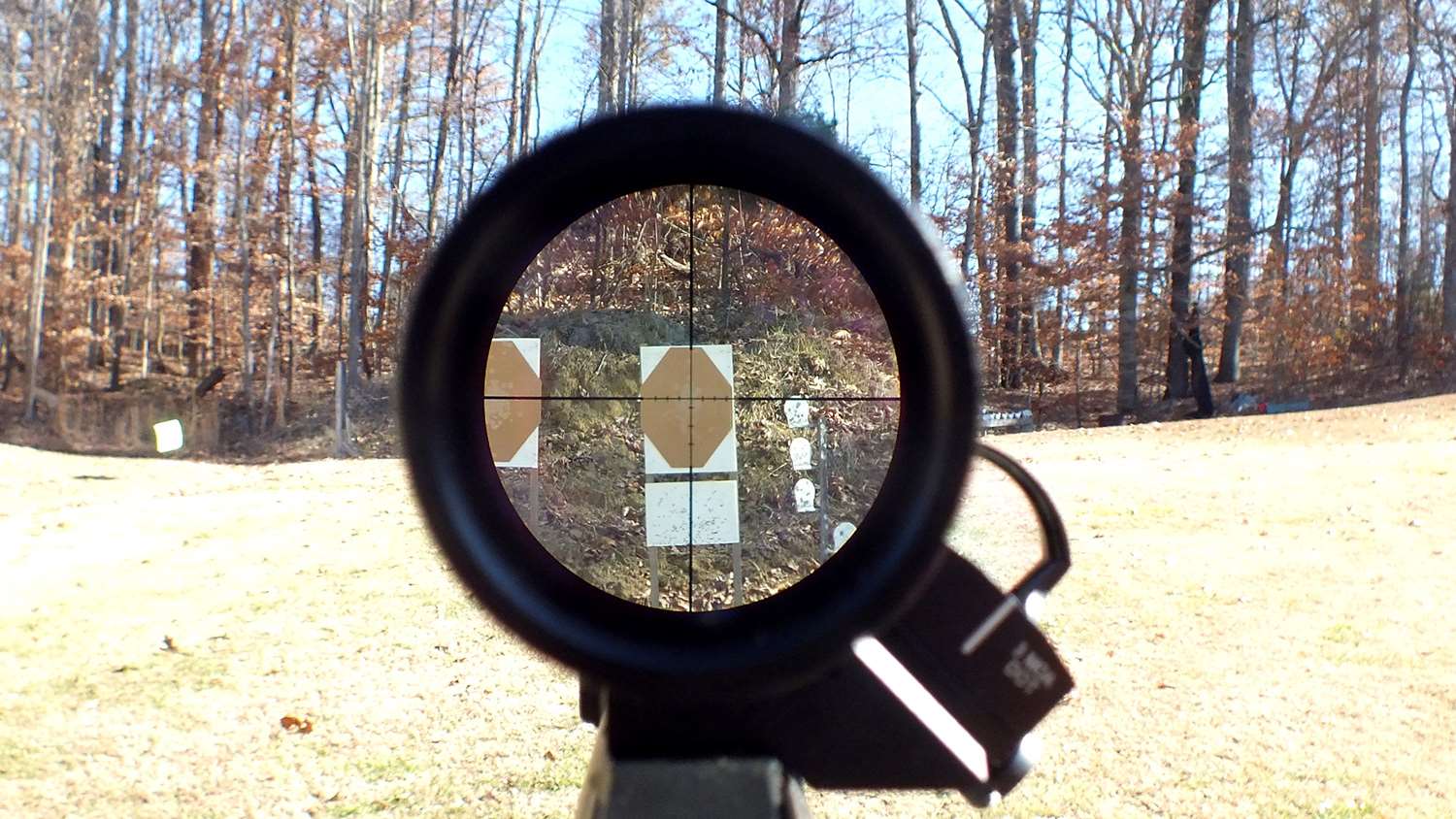
The earliest of these scopes were 1-4x variables and when I first used one, I considered it a marvel. At 1x magnification I could keep both eyes open and my field of vision was less impeded than using iron sights with both eyes open. The ability to crank up to 4x magnification allowed reasonably accurate shooting out to the accuracy capability of most modern MSRs. Since that time, optics companies have added illuminated reticles and magnification ranges up to 1-8x, along with more forgiving eye relief and eye-box range.
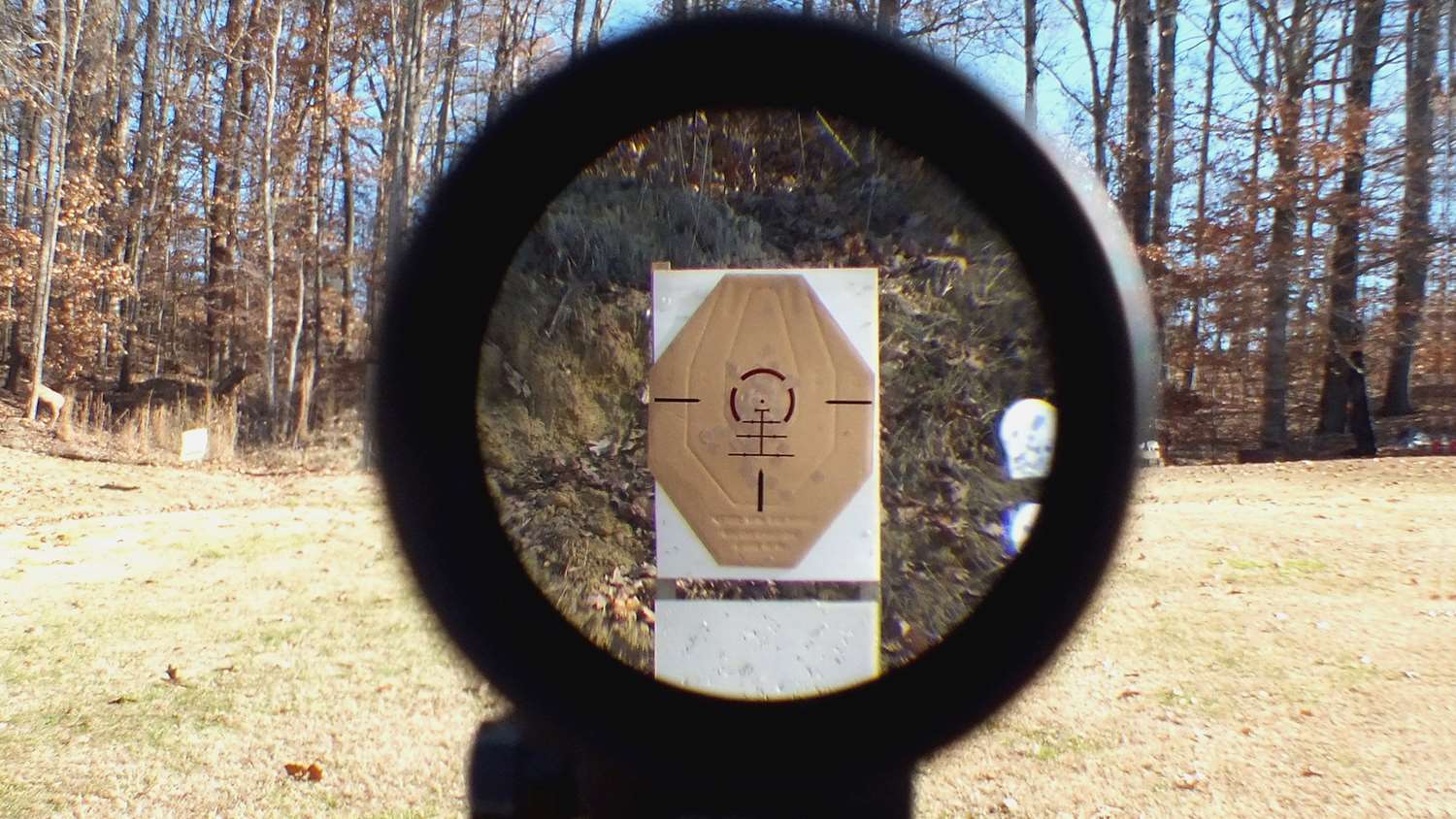
To compare the two systems it helps to understand how a reflex sight works. Reflex sights have been used on firearms since 1900, with early versions using available light to generate the reticle dot. The system became much more practical with the introduction of the light emitting diode or LED in the 1970s. Modern reflex sights are remarkably reliable, offer long battery life, and normally lighter in weight than regular optical scopes. There are two distinct types of reflex sights, open and tube.
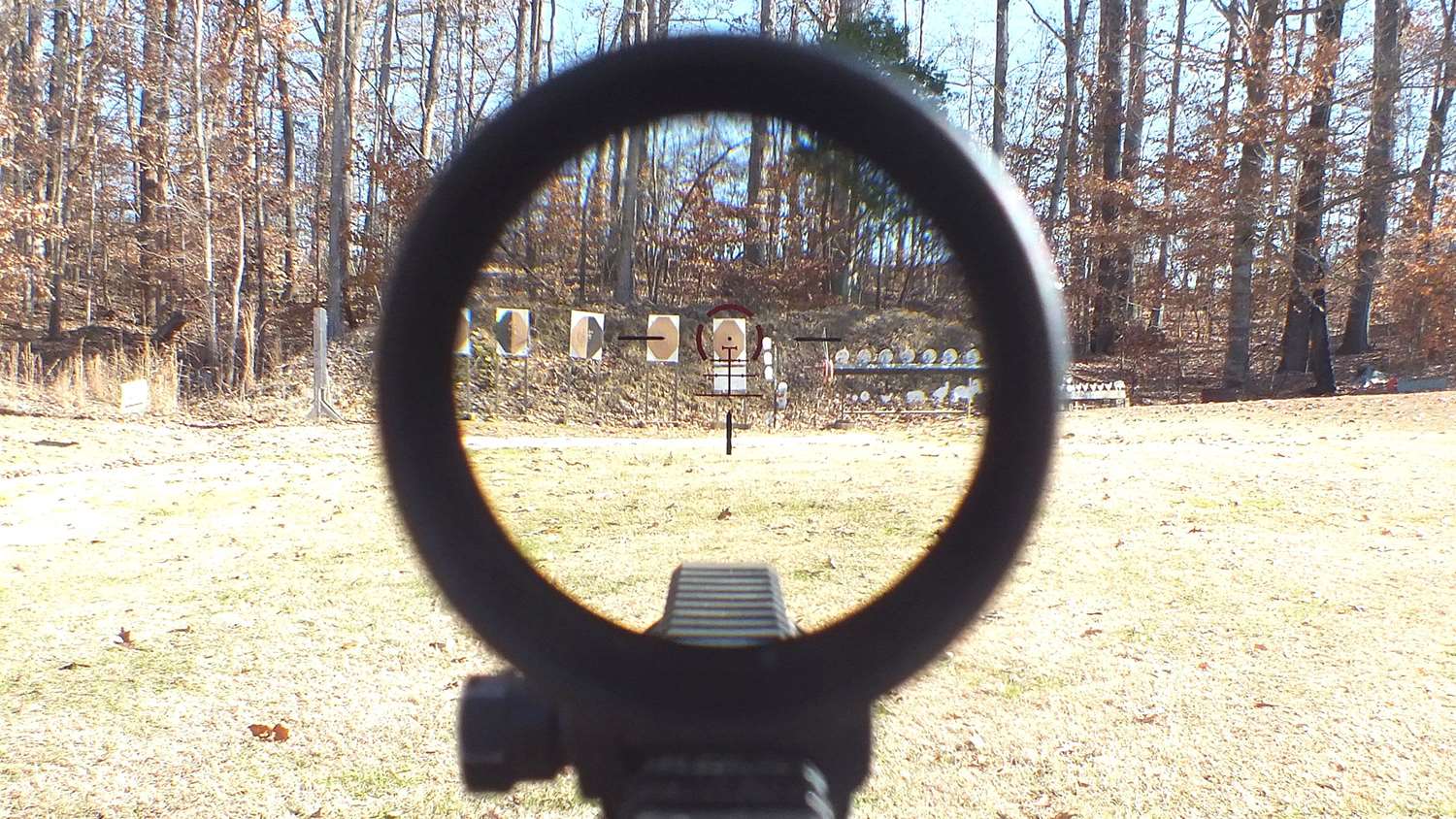
Open reflex sights are smaller and lighter than tube sights and use only one lens to show the reflection of the red dot that serves as a reticle. They offer a less obstructed view from the right eye with only a small frame surrounding the lens. The biggest advantage of the open reflex sight is a wide eye-box that allows almost any head position to acquire the reticle and a pinpoint and uncluttered dot aiming point. Dot sizes range from several minutes of angle to one MOA.
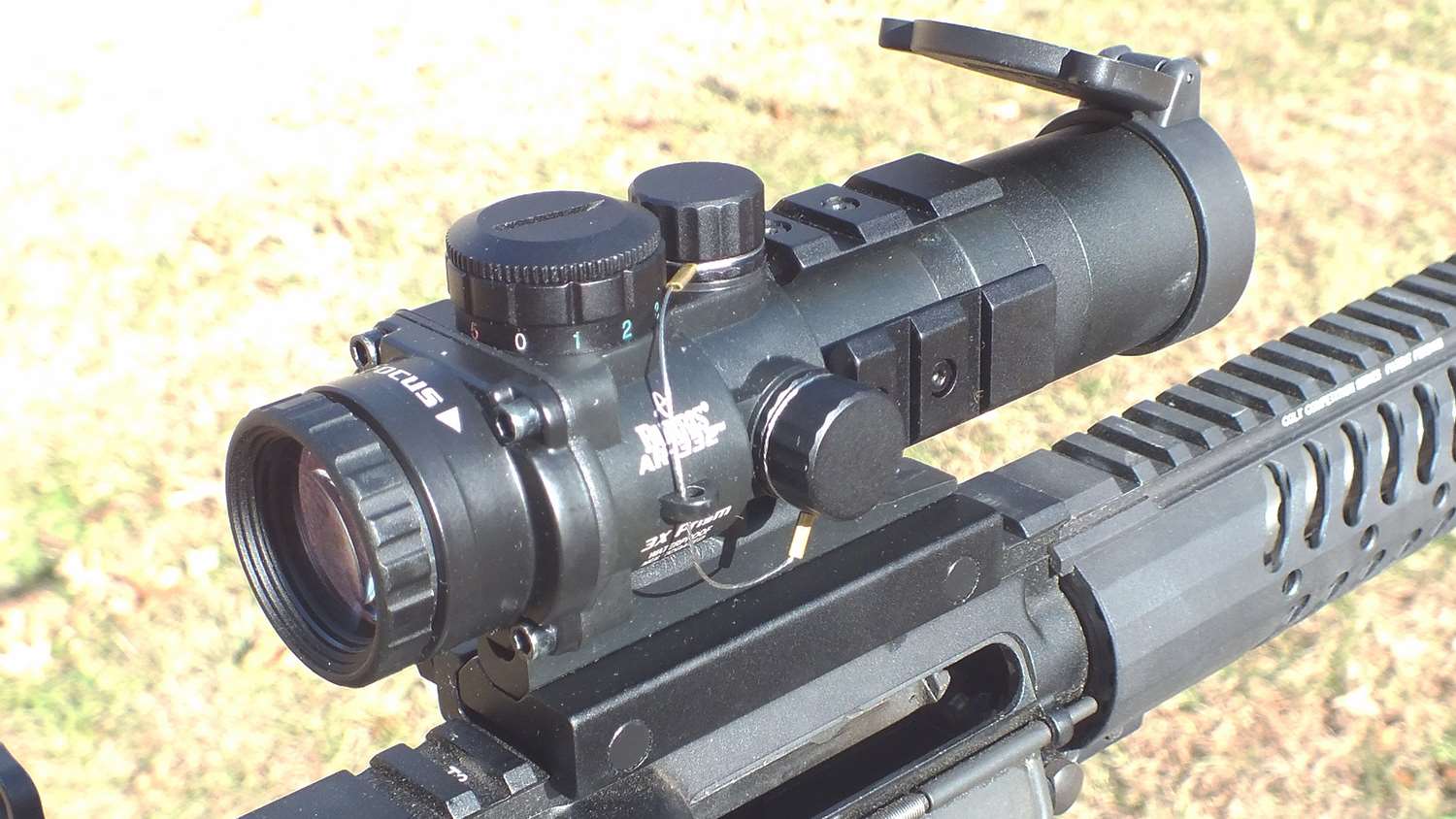
Tube sights have multiple lenses that allow the use of filters to reduce reflection. Since they’re larger, manipulating the reticle in the zeroing process is easier and often adjustments are more precise. They’re less affected by rain, though water droplets on both systems can wreak havoc with the sight picture since the aiming point is a small point of light on a glass surface.
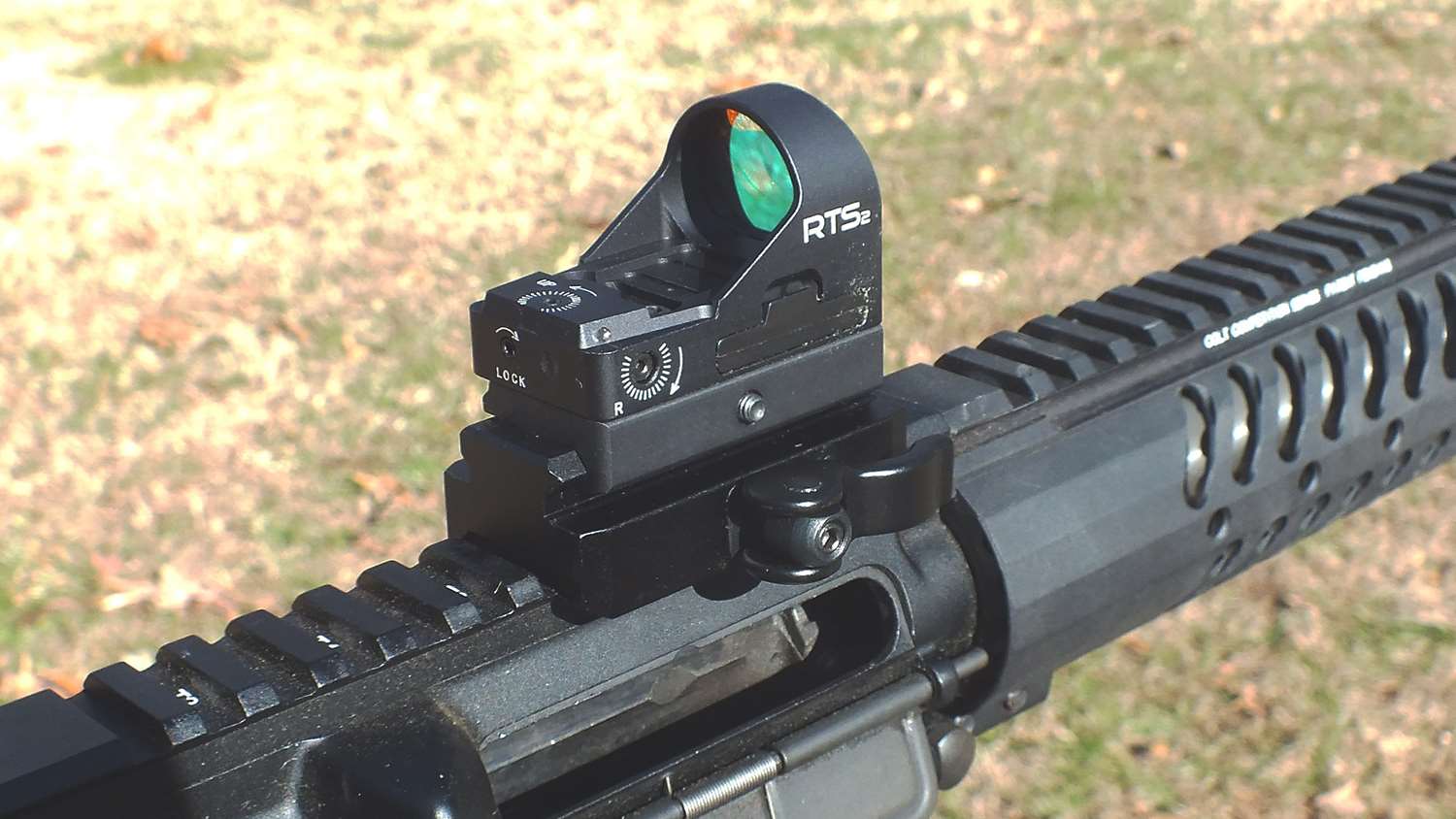
Fixed power scopes are always an option and fixed power scopes designed specifically for modern sporting rifles are popular. Fixed power scopes allow operation without a battery, though some have illuminated aiming points in the reticle. They’re simple and rugged, but limited in that they only work well for long range or short range shooting depending on magnification level.
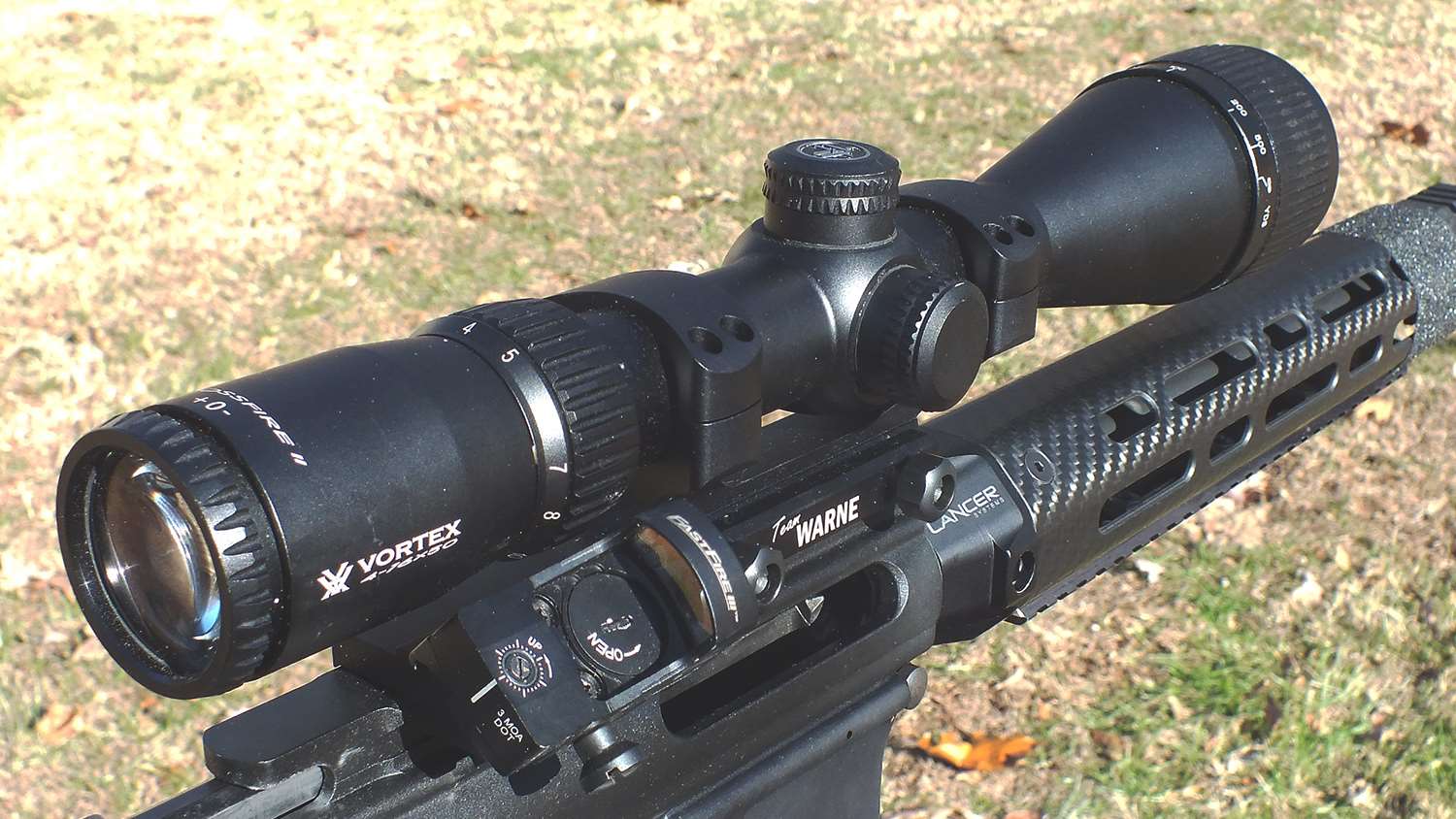
Variable scopes offer the most utility for a wide variety of uses. The earliest variables designed for MSRs were 1-4x scopes. Recent developments have brought us scopes with a 1-8x range, allowing effective use from extreme close range to ranges that stretch the accuracy potential of most rifles. With a 1x variable scope, the eye-box is less forgiving than an open reflex sight, but the ability to increase magnification can offset that advantage at longer ranges.
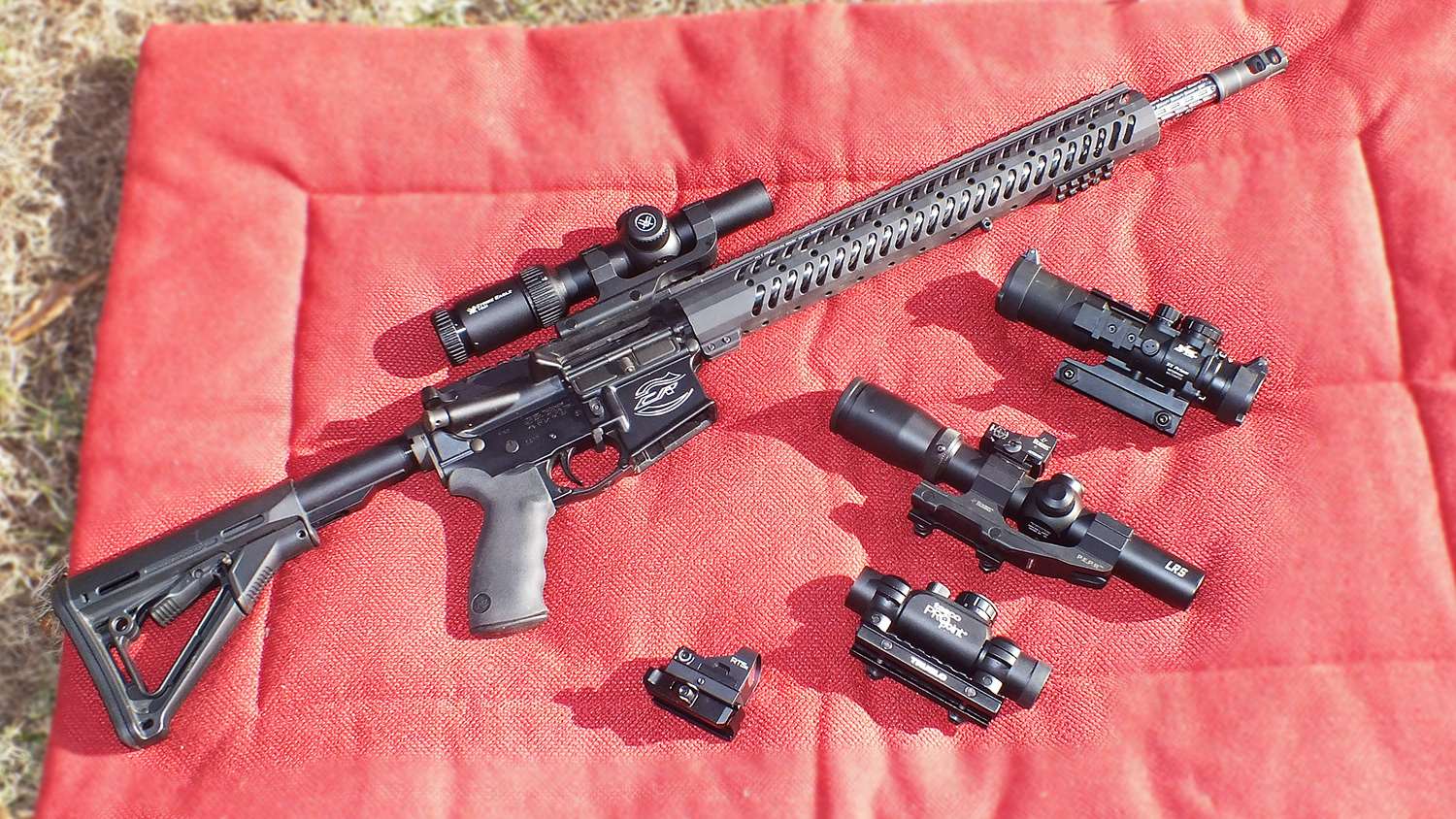
The best way to evaluate the performance of a shooting system is to observe what top level competitors are using and currently the best three gun shooters are using 1x variables with 1-8x capability. These scopes also offer illumination for difficult lighting conditions and fast target acquisition and subtension reticles that allow accurate holdovers for long range shots. Magnification level can be chosen at the beginning of the stage and magnification can be quickly cranked up for longer range shots.
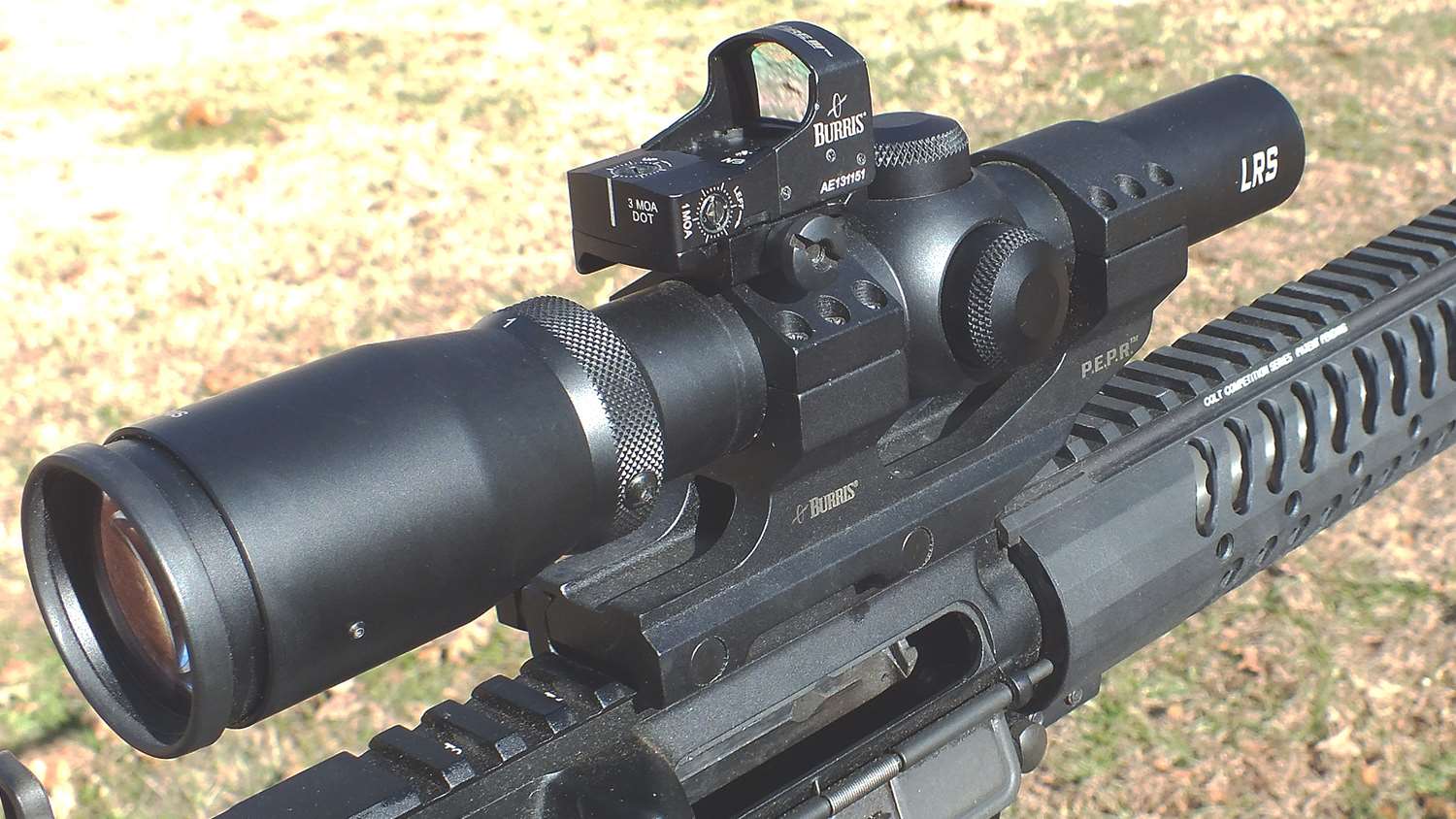
While first focal plane scopes offer subtensions that are accurate at any magnification, there are drawbacks. A bold and easy to see reticle is required for fast, close range shooting and a fine and precise reticle is needed for accurate long range shooting. First focal plane scopes provide the opposite. As the image size increases, so does the reticle; the result is a fine and difficult to acquire reticle at short range and a broad imprecise reticle for long range shooting at high magnification.
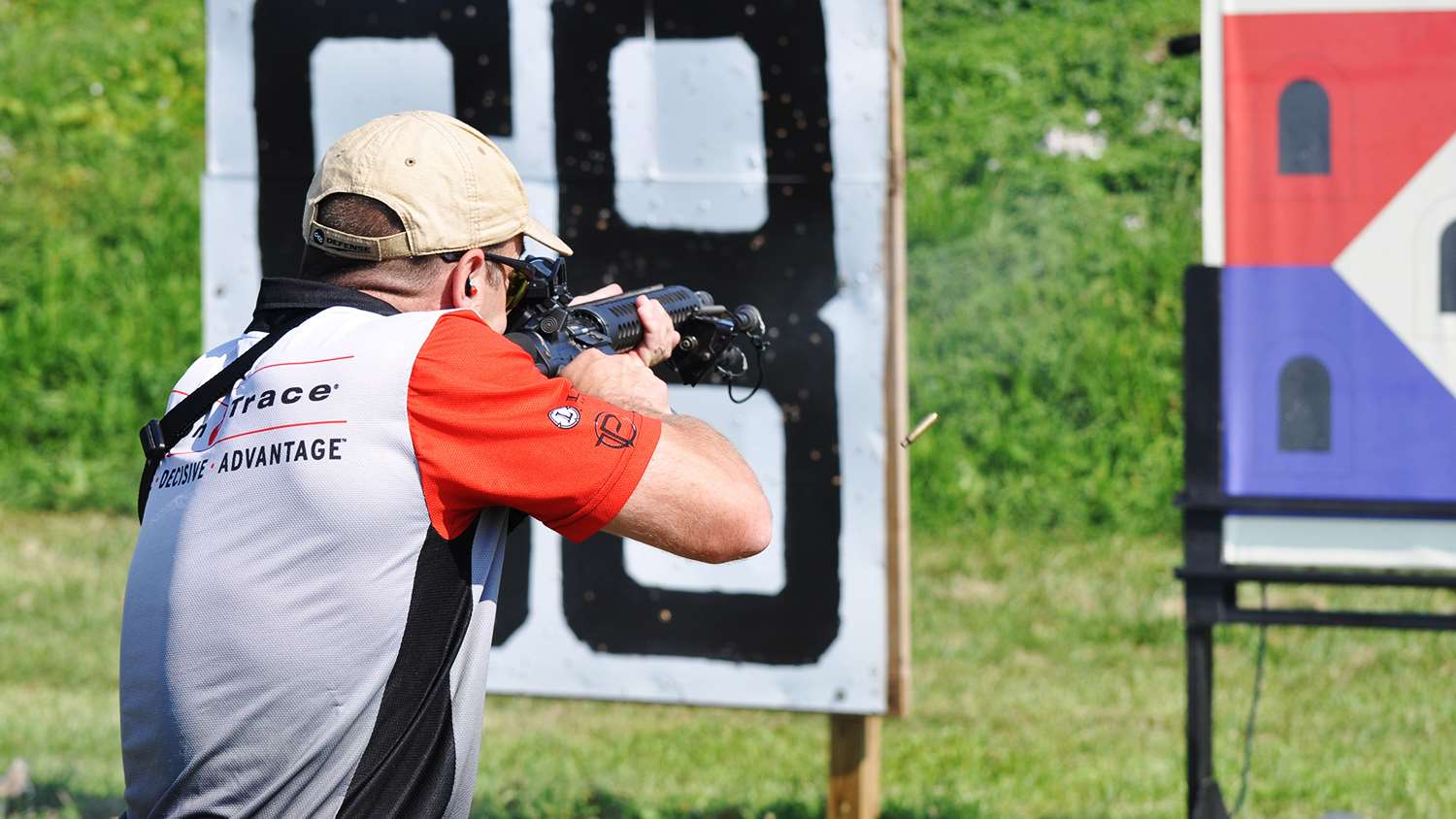
A better choice might be a second focal plane scope. Second focal plane scopes retain the same reticle size through the magnification range, allowing fast acquisition at close range and a precise reticle for shooting at longer ranges. A down side is that holdover subtensions only work at maximum magnification, but longer shots are normally accomplished with cranked up magnification anyway.
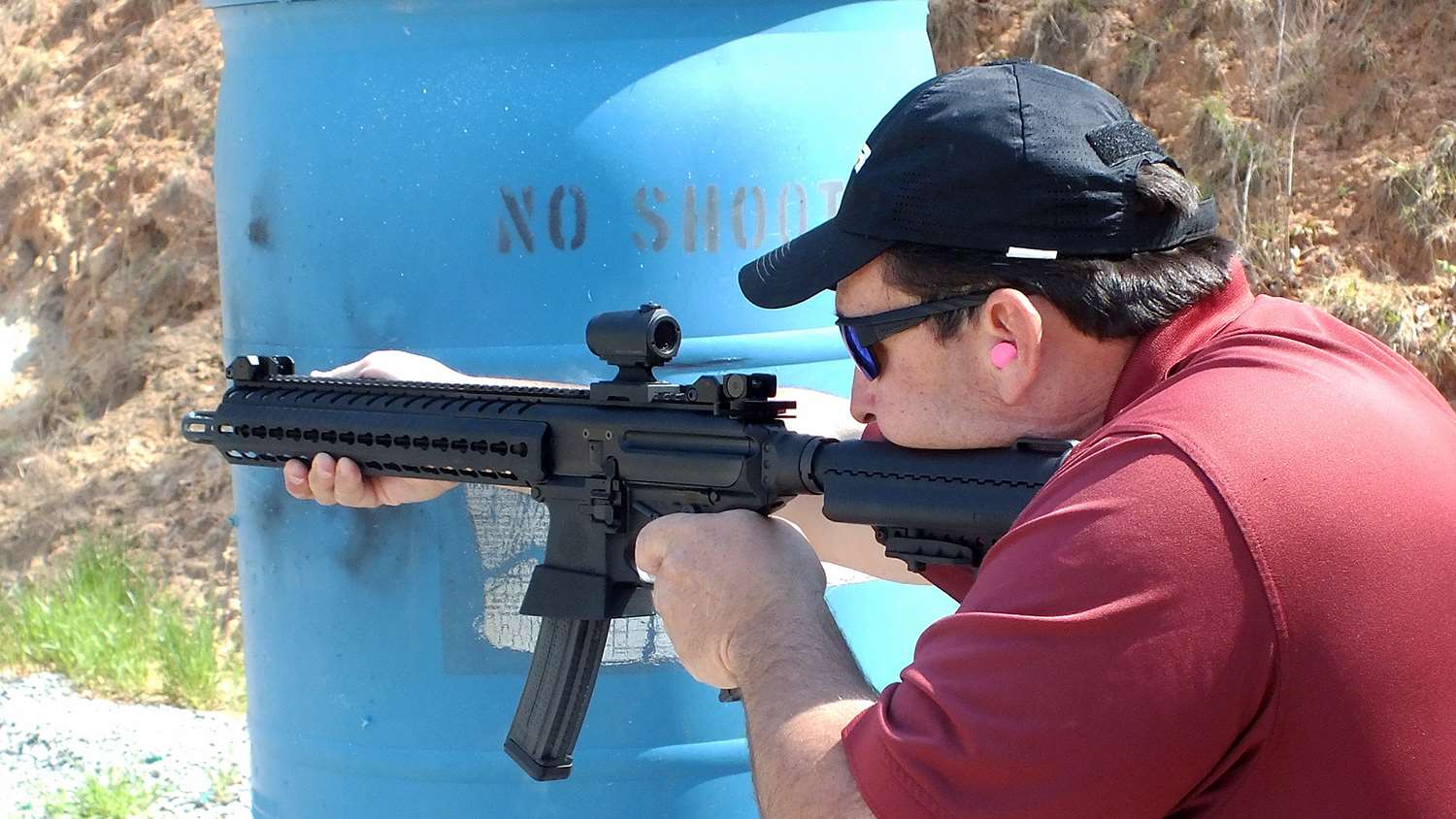
Still another option is to use both a reflex sight and a higher magnification variable. Burris makes the Reaper mount that allows mounting a reflex sight like their FastFire over the variable scope. Companies like Warne offer an angled mount that accommodated both scope and reflex sight with the reflex sight mounted at a 45 degree angle beside the scope. Ultimately, this is a better arrangement because it allows a closer sight to bore distance, making the reflex sight less affected by distance. A downside to this application is it puts the shooter in the unlimited class in most events.
Ultimately, the choice is up to the buyer and all these options have advantages for certain applications. Open reflex sights are fast and lightweight, and provided there are few shots beyond 50 yards, may be the best choice. The additional weight of a variable scope can be a disadvantage if really fast transitions are required, but variables work better for a wider range of applications, especially when equipped with an illuminated reticle.













